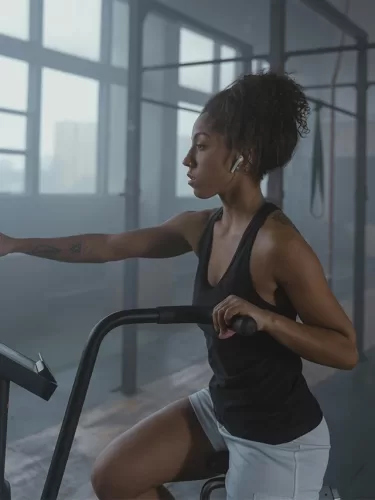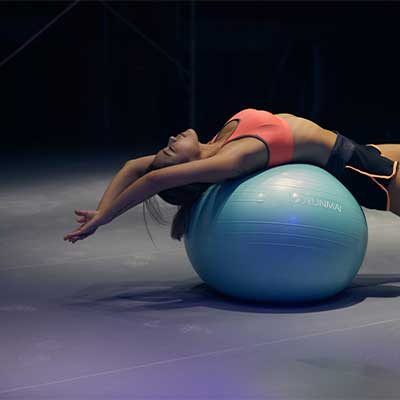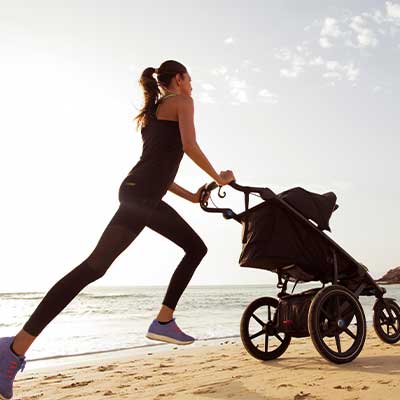Last Updated on February 16, 2025
“Ouch, my back hurts from sitting all day long. My neck feels stiff from staring at a computer screen for eight hours a day. Does that sound familiar? Is that you? There are different types of stretches that can help alleviate this discomfort.”
What started off as a temporary health precaution, has turned into an indefinite “work from home” reality for many. As liberating as that may sound in some aspects, it may not be what’s best for our bodies. That’s why it’s important for people working from home to become proactive about their physical form while working.
The human body was not meant to sit for hours straight looking at a screen; it was meant to be mobile and strong. Our bodies need movement, and it’s your job to ensure you’re getting enough of it.
We’ve already established that sitting in a single position for too long isn’t healthy, but what makes matters worse is doing so with poor postures, such as a rounded forward-leaning back, slumping to one side, or even leaning too far back in a hyperextended position. Any of these positions can place unnecessary stress on the spine for extended periods of time. For example, when seated for long periods of time, even with an upright posture, our hips are in a flexed position. This repeated occurrence over time can lead to tight hip flexor muscles, which can contribute to lower back pain.
Don’t be alarmed though: I’m going to guide you through what you can do to counter the negative effects of prolonged sitting and screen exposure. As I mentioned previously, movement is key. One simple and effective trick you can implement is setting your alarm for every hour or so to remind you to stand up and move a bit. Since sitting for hours is going to “stiffen” up your muscles, you need to loosen them up, and a great way to do so is stretching. Stiff muscles are usually shortened and restricted in the range of motion, so by stretching them out, you’ll improve flexibility and ROM (range of motion) and alleviate pain.
The Main Types of Stretches
You might be asking yourself which types of stretches should you be doing, how many repetitions, how long, etc. Rest assured I’ll cover everything shortly.
To start off, what are the different types of stretches? Should you be doing all of them to stay active while working from home?
Different Types of Stretches
- Static stretching
- Dynamic stretching
- Ballistic stretching
- PNF stretching
Let me better explain the difference between these various types of stretches:
- Static Stretches: Stretches you hold in place for some time (optimally 30-40 seconds) without movement.
- Dynamic Stretches: Active movements that stretch a specific muscle to its full range of motion.
- Ballistic Stretches: Utilizes muscle activation through quick, jerky movements.
- PNF Stretches: This stands for proprioceptive neuromuscular facilitation and is a more advanced form of flexibility training that involves both the stretching and contracting of the targeted muscle group.
It’s also worth mentioning that stretches can be active and passive, meaning active stretching is when you actively perform the stretch without any external force, such as from a partner. Passive stretching implies the use of external help, such as accessories or a partner to stretch a specific muscle group.
The Benefits of Stretching
Now that we’ve established the different types of stretches, let’s talk about their benefits. As I mentioned above, sitting for prolonged periods of time on a daily basis will eventually tense up your muscles. Tense muscles are usually shortened muscles with a limited range of motion, and that can lead to limited circulation in that area. So the main benefits you’ll reap from stretching are improved flexibility, improved circulation, and blood flow to the muscles that will aid in recovery, improved posture, and may even help you manage stress. Not to mention the sports-specific benefits of stretching, including performance enhancement, injury prevention, and facilitating recovery.
Now that we know the what and why, it’s time to talk about the how. I would recommend performing static stretches and holding each stretch for at least 20-30 seconds.
Here’s a list of must-do stretches:
- Child’s pose: Start by kneeling on the floor. Attempt to bring your butt as close as you can to your heels while lowering your torso between your knees. Extend your arms palms facing downwards. Hold that position for at least 30 seconds. You should feel relief in your lower back area afterward.
- Hip flexor stretch: Start in a split stance lunge position on the floor. Keep your torso upright. Start by squeezing your glute muscles and then drive your front knee forward until you feel a nice stretch on the opposite side hip flexor (front of the hip).
- Supine hamstring stretch: You can use an elastic band or towel for this exercise. Start by lying on your back with both legs extended forward. Loop the band or towel around your foot and use your arms to pull the leg up straight while also keeping the opposite leg straight on the floor. Stop when you feel a nice stretch at the back of your thigh. It’s important to remember to go slow! Don’t stretch too vigorously off the bat.
- 90-90 hip stretch: Sitting down on the floor, place your front leg in a 90-degree angle directly out in front of you with the knee flat on the floor. Do the same with the rear leg behind you. Both knees should be at a 90-degree angle, hence the name of the stretch. Place your hands to the sides. Then slowly bring your chest forward towards your knee by bending at the hips and keeping your torso upright. Hold this stretch for 45-60 seconds. Finally, place the rear leg forward and repeat.
- Doorway pectoral stretch: Stand at an open doorway. Raise your arm up to your side at a 90-degree angle with your palm facing forward. Then place your palm and elbow on the door frame. Slowly step forward with one foot and feel a nice stretch in your chest and anterior shoulder. Hold for 30 seconds and repeat with the opposite arm. This stretch is going to improve your posture, especially if you have a tendency to slouch when working.
- Side tilt lateral neck stretch: Start standing, feet hip-width apart and with an upright torso. Gently tilt your head towards your right shoulder without elevating it. You should feel a stretch on your left side. You can also use your right hand to further tilt the head by gently applying downward pressure. Hold for 30 seconds and then switch sides.
Another great way to alleviate muscle aches and stiffness and release knots is self-myofascial relief (SMR), which you can do using foam rollers, lacrosse balls for targeted pressure points, etc.
Foam rolling is especially good for improving mobility and range of motion, reducing inflammation, and relieving tightness and soreness.
Here are some tools/accessories you can implement to your stretching and myofascial release routine:

To Sum Up
It’s worth noting that stretching for a day or two isn’t going to miraculously alleviate all your body aches and pains. If you’ve been working a desk job for a while now, keep in mind that it’s going to take some time to undo the damage caused by prolonged hours of sitting and/or bad posture. The important thing is for you to remain persistent and determined. Remember, you only have one body, so take good care of it.
From Couch to Confidence: The Lazy Girl’s Guide to Fitness Resolutions 2025
Hey Queen, Ready to Slay Those Fitness Goals Without the Stress? We’ve all been there—scrolling…
3 Amazing Set Activewear Brand Picks for the Summer
We all know that moving our bodies is ideal for our wellness, but sometimes we want…
A Beginner’s Guide to Creatine Gummies: Empowering Wellness
In the pursuit of optimal health and fitness, individuals often seek effective strategies to enhance…
Core Ball Exercises: 5 Creative Ways You Can Tone Your Stomach Effectively
Core Ball Exercises: 5 Creative Ways You Can Tone Your Stomach Effectively If you want…
8 Common Fitness Myths: Unveiling the Truth Behind Exercise Misconceptions
Unveiling the Truth Behind Exercise Misconceptions! The world of fitness has many dos and don’ts….
9 Healthy Postpartum Diet Tips for Post-Pregnancy Weight Loss
Having a baby and becoming a mother are some of the most amazing experiences that…
Andre is a strength and conditioning coach/personal trainer with over 9 years of experience in the field. His methodology is "Assess. Correct. Train".
- Andre Koumachianhttps://successiblelife.com/author/andre-koumachian-certified-personal-trainer/
- Andre Koumachianhttps://successiblelife.com/author/andre-koumachian-certified-personal-trainer/
- Andre Koumachianhttps://successiblelife.com/author/andre-koumachian-certified-personal-trainer/
- Andre Koumachianhttps://successiblelife.com/author/andre-koumachian-certified-personal-trainer/






